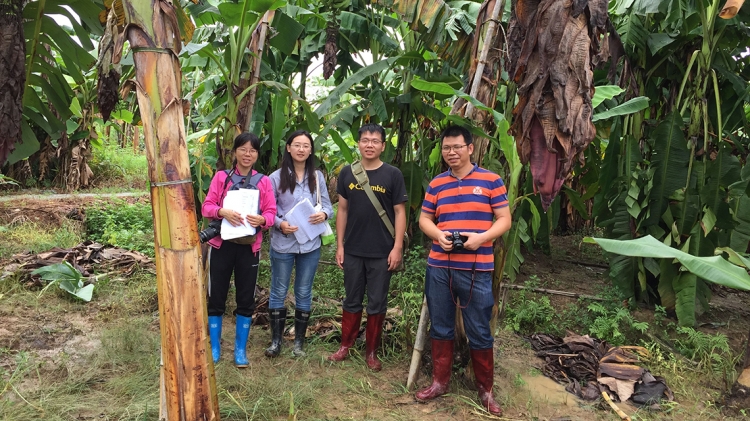Bananas may be the world’s favourite fruit, but plantations worldwide are increasingly under threat from a new fungus, which destroys banana plants threatening farmers’ livelihoods and the industry.
Confined to Southeast Asia for decades, the Fusarium wilt Tropical Race 4 (TR4) was spotted for the first time in Africa recently and in Latin America earlier this year. Its outbreak in Colombia in August led to the declaration of a national emergency.
The IAEA – in cooperation with the Food and Agriculture Organization of the United Nations (FAO) – has worked with researchers from all around the world to support the development of new varieties of various banana species that would be resistant to the disease.
“Modern bananas can’t grow seeds and so are difficult to improve using cross breeding,” said Ivan Ingelbrecht, Head of the FAO/IAEA Plant Breeding and Genetics Laboratory. Therefore, the use of techniques such as irradiation or chemical mutagenesis to produce new varieties with favourable traits is often a favoured option to combat the disease.
After years of research, Chinese experts have recently released a new variety resistant to TR4 of Cavendish, the banana that is used for export. The new variety was developed using chemical mutagenesis techniques. Other countries, including the Philippines, are in advanced stages of developing their own varieties using gamma irradiation, Ingelbrecht said.
Fusarium wilt has been a major constraint to banana production for over a century. The disease is caused by a soil-borne fungus called Fusarium oxysporum f. sp. cubense. The pathogen remains viable for decades in the soil and is therefore difficult to eradicate. A new race of this fungus has recently emerged, called Tropical Race 4 or TR4. “The fungi enter susceptible plants through the roots and interfere with the uptake of water, causing wilting of the leaves and the banana plant eventually dies,” explained Ingelbrecht.
The FAO estimates that the annual direct damage caused by TR4 in Southeast Asia reaches about US$ 400 million, excluding indirect socio-economic impacts.
“The release of a new Cavendish variety will benefit many farmers; this success is due to the close collaboration with the IAEA and the FAO on mutagenesis techniques,” said Yi Ganjun, Vice President of the Guangdong Academy of Agricultural Sciences in Guangzhou. “This state-of-the-art technology has resulted in a remarkable breakthrough to combat Fusarium wilt.”
“The exciting results of a new ‘local’ banana variety resistant to Fusarium Wilt TR4 gives tremendous hope to banana farmers who have successfully tested the new plants in field trials,” said Yi. “Mutagenesis techniques can contribute to the development of new banana plants to suit local environmental conditions.”
The new variety is now being multiplied and distributed to other provinces. Chinese experts are willing to help their colleagues in other countries to develop varieties resistant to TR4 that are suited for their climatic and soil conditions, Yi added.
Scientists use in vitro techniques to grow thousands of small banana plants in culture tubes suitable for mutagenesis using chemicals, gamma rays or X-rays. These speed up the natural process of mutation in plants and creates genetic diversity that can then be used to produce new varieties, including those with favourable traits. A coordinated research project with the participation of scientists from six countries, including China and the Philippines, has spearheaded work on developing banana lines with resistance to TR4 since 2015.
“The success achieved using chemical mutagenesis and the promising progress using irradiation in several Asian countries suggests that developing new, TR4-resistant varieties will be possible in the not too distant future in other parts of the world as well,” Ingelbrecht said. “The IAEA and the FAO are committed to helping countries get there.”







